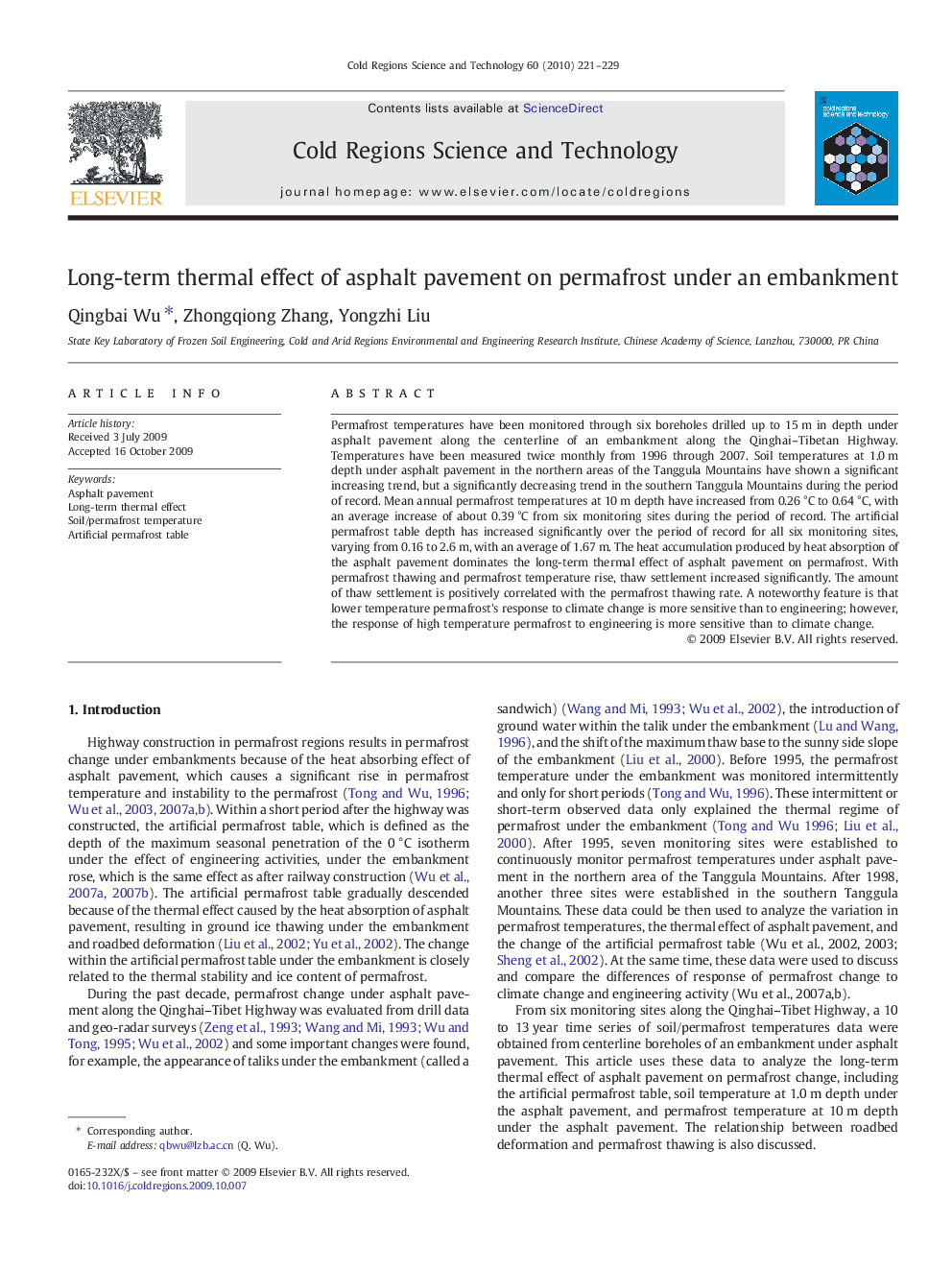| Article ID | Journal | Published Year | Pages | File Type |
|---|---|---|---|---|
| 4676254 | Cold Regions Science and Technology | 2010 | 9 Pages |
Permafrost temperatures have been monitored through six boreholes drilled up to 15 m in depth under asphalt pavement along the centerline of an embankment along the Qinghai–Tibetan Highway. Temperatures have been measured twice monthly from 1996 through 2007. Soil temperatures at 1.0 m depth under asphalt pavement in the northern areas of the Tanggula Mountains have shown a significant increasing trend, but a significantly decreasing trend in the southern Tanggula Mountains during the period of record. Mean annual permafrost temperatures at 10 m depth have increased from 0.26 °C to 0.64 °C, with an average increase of about 0.39 °C from six monitoring sites during the period of record. The artificial permafrost table depth has increased significantly over the period of record for all six monitoring sites, varying from 0.16 to 2.6 m, with an average of 1.67 m. The heat accumulation produced by heat absorption of the asphalt pavement dominates the long-term thermal effect of asphalt pavement on permafrost. With permafrost thawing and permafrost temperature rise, thaw settlement increased significantly. The amount of thaw settlement is positively correlated with the permafrost thawing rate. A noteworthy feature is that lower temperature permafrost's response to climate change is more sensitive than to engineering; however, the response of high temperature permafrost to engineering is more sensitive than to climate change.
